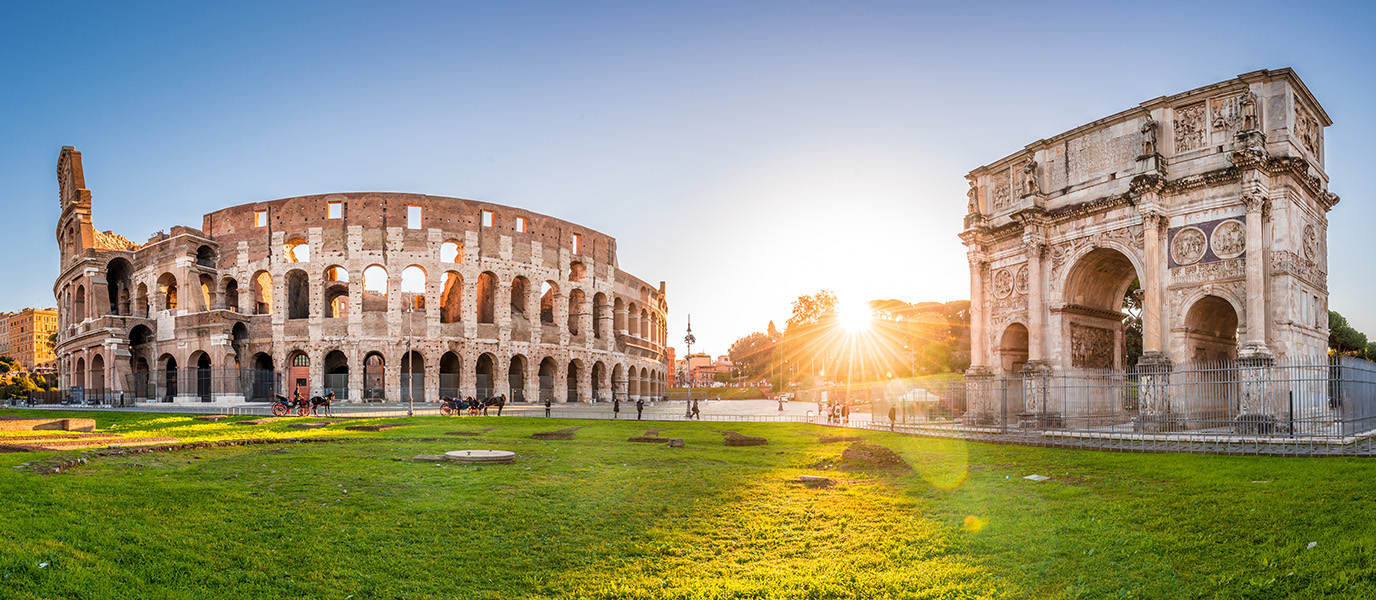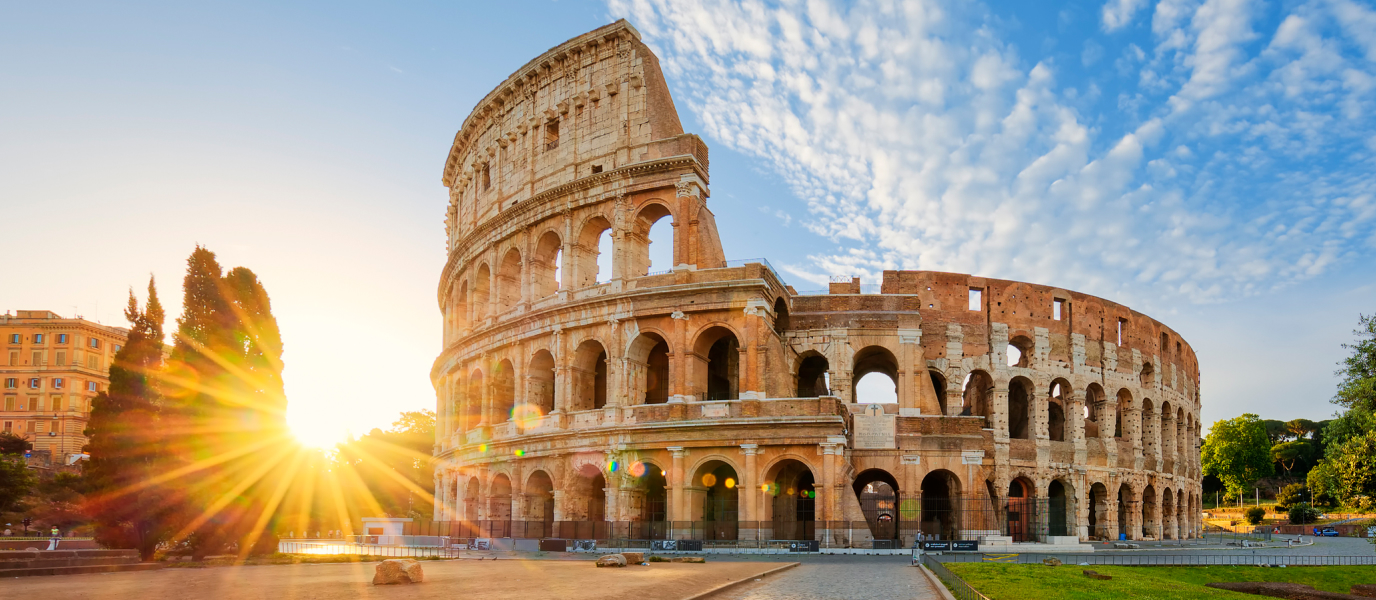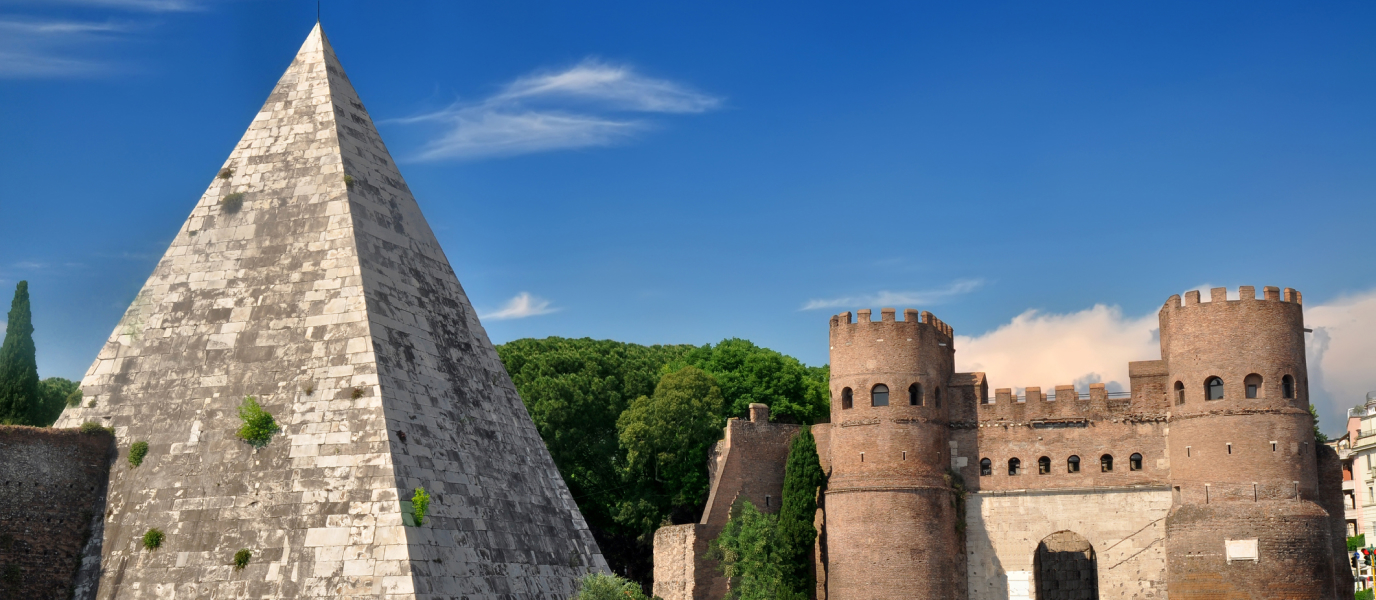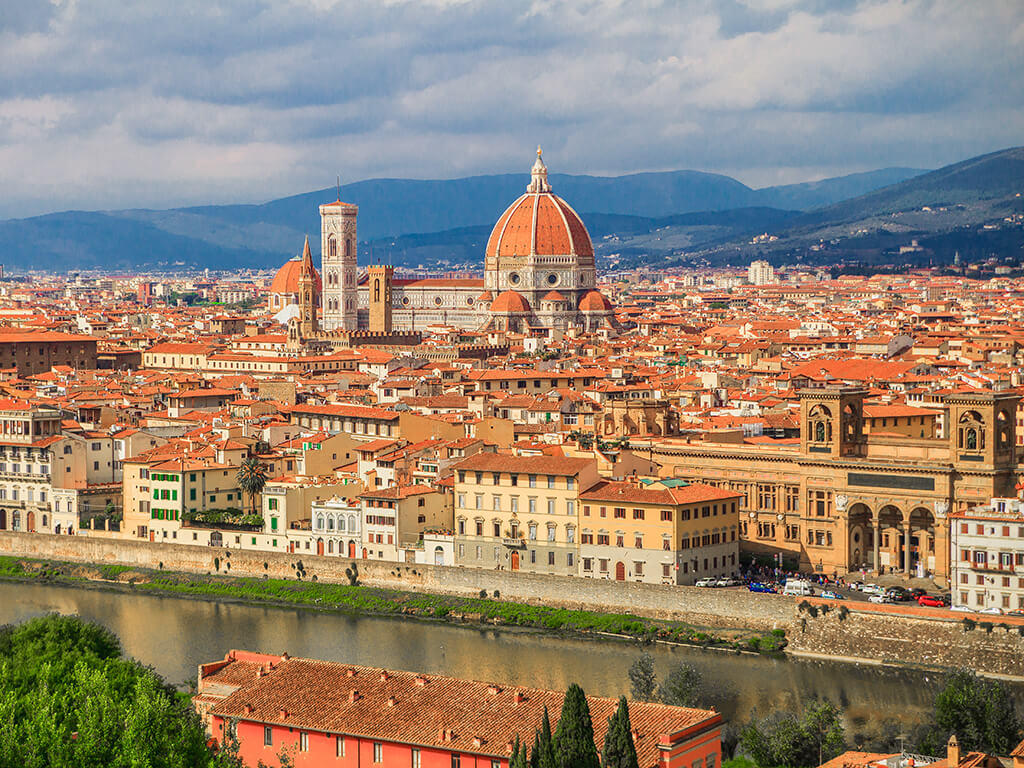The Colosseum is undoubtedly the most grandiose example of Roman architecture and a must-see during any trip to Rome. The Colosseum is right in the heart of the city, and it’s amazing to think that such an imposing yet graceful building was built some 20 centuries ago. It’s now one of Rome’s great tourist attractions.
The best way to get an idea of its size is from a distance. The two best spots for gazing at what is the largest Ancient Roman monument are the Colle Oppio, a nearby park, and the Belvedere (Largo Agnes), next to the Colosseo metro station. Have your camera at the ready…
History of the Colosseum
We’ll now reveal five things you absolutely must know about the history of the Colosseum.
Origin. Construction of the Colosseum began in the year 70 AD by order of Emperor Vespasian. He was inspired by the nearby Teatro di Marcello though selected a site with an artificial lake next to Nero’s residence, the Domus Aurea (Link: Domus Aurea).
Foundations. The marshy nature of the site caused many problems and required several drains as well as watertight foundations.
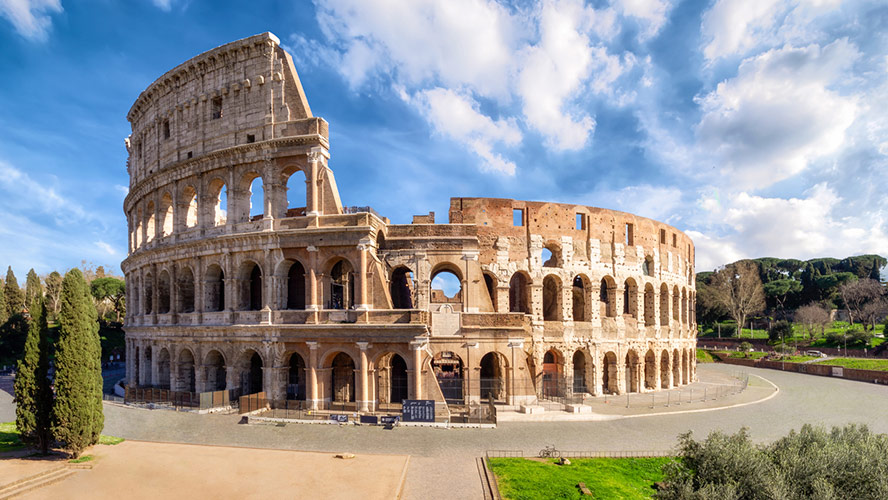
Cost. The Colosseum was financed by the spoils of the victory over the Jews in the year 70. Some 50 tonnes of gold and silver were shipped from the Temple in Jerusalem and invested in the building works. As for the workers, history suggests the heavy labour was done by Jewish slaves captured during the campaign.
Inauguration. Vespasian died in the year 79 and it was his son, Titus, who inaugurated the Colosseum the following year with a 100-day celebration that included 9,000 animal sacrifices.
Layout and capacity. The Colosseum has 80 rows of seats and several other exits, or vomitoria. It seated between 50,000 and 70,000 spectators, though today only 3,000 people are allowed in at a time for safety reasons and to protect this heritage site. During Ancient Roman times, the seats were covered by a pulley-operated canvas roof that provided protection from adverse weather. A whole variety of construction techniques were used in the Colosseum.
Inside the Colosseum
The Colosseum or Flavian Amphitheatre is much less spectacular inside than out. Most of the original seats and floor are gone, and a serious fire in the year 217 destroyed the upper tiers and original wooden floor. This tragedy was followed by more fires and earthquakes over the next 400 years.
The building was used as a workshop and cemetery in the 6th century before being given over to other uses: factory, religious headquarters, fortress, quarry, refuge and others. In the 14th century, much of the southern end collapsed completely. The rubble ended up being used in churches, roads, walls, and palaces such as the Palazzo Venezia, the Palazzo Farnese and the Palazzo Barberini.
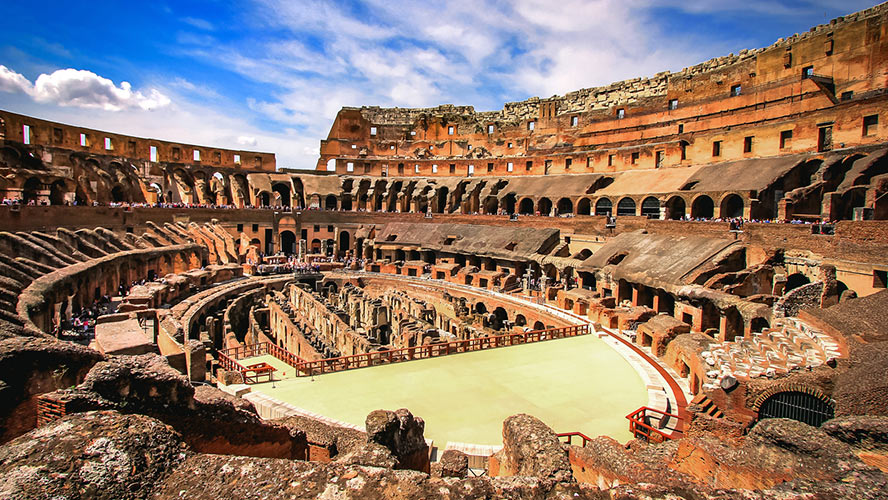
Interesting facts about the Colosseum
- The Colosseum was mainly used as the venue for gladiatorial contests.
- Spectators sat in different areas depending on their social status and gender. The emperor and the Vestal Virgins were seated on the lower tiers. Next to them were the senators, dressed in white (they brought in their own chairs too). Knights and aristocrats sat in the tier above, and above them were the ordinary citizens. Women, slaves and poor citizens were relegated to the uppermost tier. Some people including gravediggers, actors and former gladiators were banned completely.
- The name derives from a large statue called the Colossus of Nero that once stood nearby.
- The Colosseum is 189 metres long, 156 metres wide and 57 metres tall and has a perimeter of 524 metres. It is believed to have provided the blueprint for modern sports complexes.
- In 1980, the Colosseum was declared a World Heritage Site by UNESCO and entered into the New Seven Wonders of the World on 7 July 2008.
- The Colosseum has appeared in several films, among them Roman Holiday (1953), Gladiator (2000), Demetrius and the Gladiators (1954), 20 Million Miles to Earth (1957), Double Team (1997), The Core (2003) and Jumper (2008), not to mention in several successful video games including Colosseum Road to Freedom, Gladiator Begins, Assassin’s Creed: Brotherhood and Ryse: Son of Rome.
- The Colosseum has appeared in several films, among them Roman Holiday (1953), Gladiator (2000), Demetrius and the Gladiators (1954), 20 Million Miles to Earth (1957), Double Team (1997), The Core (2003) and Jumper (2008), not to mention in several successful video games including Colosseum Road to Freedom, Gladiator Begins, Assassin’s Creed: Brotherhood and Ryse: Son of Rome.
- The Colosseum has appeared in several films, among them Roman Holiday (1953), Gladiator (2000), Demetrius and the Gladiators (1954), 20 Million Miles to Earth (1957), Double Team (1997), The Core (2003) and Jumper (2008), not to mention in several successful video games including Colosseum Road to Freedom, Gladiator Begins, Assassin’s Creed: Brotherhood and Ryse: Son of Rome.
Recommendations when visiting the Colosseum
Avoid the bars and eateries near the Colosseum – they’re usually overpriced. If you’re hungry, Vía Cavour or Vía di San Giovanni in Laterano are safer bets.
The Colosseum is beautiful by day but is particularly alluring at night when it’s illuminated.
If it’s packed with tourists when you get there, head to the nearby Colle Oppio for a stroll in the park while you wait for things to quieten down.
On Good Friday, the Pope still leads the traditional Vía Crucis public prayer at the Colosseum. The building was for a long time considered a Christian sanctuary.
You’ll likely be approached by people dressed as Romans or gladiators offering photo opportunities for a fee. Make sure to negotiate the price beforehand to avoid a tricky situation.





























































